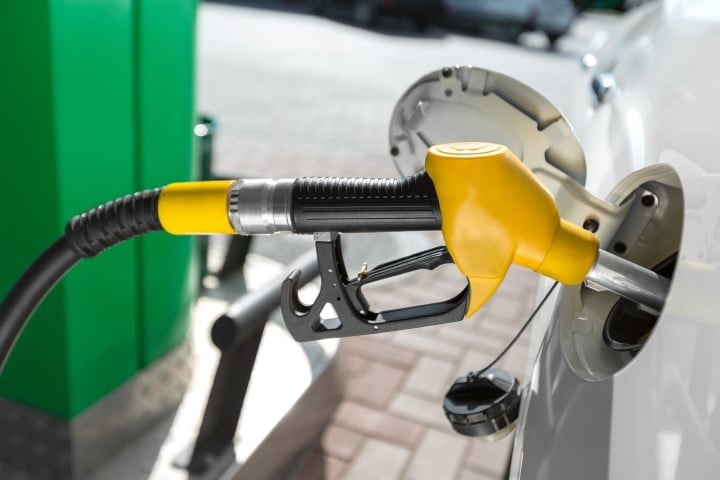More Ways Fuel Distributors Can Protect Their Clients' Bottom Line From Ethanol
If you run a business in the fuels industry, the problems of your customers are, really, your problems. When your customers think about the ethanol...
4 min read
Erik Bjornstad : Aug 4 2022
If you run a business in the fuels industry, the problems of your customers are, really, your problems. When your customers think about the ethanol fuels they use, what do they see? Do they have visions of the tanker truck carrying gasoline, but with a DG placard on the back warning of “hazardous corn onboard”?
Ok, maybe that’s a little bit of hyperbole, but it’s not too far from the truth. Do you know how much money your customers lose each day from the cost of both the proactive and reactive steps they have to take to minimize ethanol fuel problems in their vehicles and equipment? What about the costs of not doing these steps?
The problems that consumer drivers complain about when they use ethanol fuels are the same problems your customers are facing. These problems are like “budgetary vampires” – they suck the life out of the bottom line for businesses.
This presents an opportunity for you. Being the expert resource for your clients is good business. So let’s break down some of the more common problems and the costs they incur for clients like yours. Then we can look at what options you might choose to provide as their fuel supplier. In a landscape where everyone is looking out for themselves, you can get “customers for life” by being their problem-solving hero.
It’s well known that ethanol blends like E10 and E15 reduce vehicle mileage and increase fuel consumption. This stems from the reduced energy content that ethanol blends have – ethyl alcohol is a smaller molecule with less carbon content than the petroleum molecules it is replacing. Energy value is the primary determinant of the potential mileage or work an engine or machine is going to be able to get out of fuel. Conventional gasoline with no ethanol contains 112,500 BTUs of energy in the winter and 114,500 in the summer (hence why gas mileage goes down in the winter, regardless). A gallon of E100 ethanol contains less than 75,000 BTUs per gallon. Hence, when you replace 10% of the gasoline volume with ethanol, you lose 3.3% of the energy value, while moving up to E15 causes a loss of 5% of the energy value. So when your customers notice their mileage isn’t what it used to be, there’s a relatively simple explanation for it.
A loss of 3.3 – 5% mileage may not seem like very much, but represents a substantial monetary penalty when the volume of fuel used and the cost per gallon is accounted for. A larger municipal fleet using 400 gallons of fuel per day at $3.25 a gallon could expect to lose almost $45 per day and over $16,000 per year just in reduced fuel mileage from ethanol. If they have to use E15 and their mileage loss is 5%, that yearly loss goes up to over $24,000.
Lawn care dealers around the country have seen a boon of repairs to small equipment exposed to E10 and E15 fuels. The damage from ethanol stems from both its solvency characteristics and its interference with 2-cycle lubrication. The important things you need to know are:
Both vehicle and equipment manufacturers have scrambled to cover their “backs” on the ethanol issue. The automakers’ biggest worry is how the new E15 fuels will affect anything other than the newest vehicles. This is such a big worry that ten of the biggest automakers in the market have banded together to tell consumers that if their cars are damaged by E15 use, in whatever way, their warranties will not be honored. Outrageous, I know. And small equipment makers like Honda and Stihl have strongly advised users not to use anything higher than 10% ethanol in their equipment. Your customers, especially those running a business, rely on warranties to protect them from risk. Not having a warranty honored because of fuel damage is a bitter pill to swallow indeed.
Ethanol can be very sensitive to phase separation problems caused by the water it absorbs in storage. Back in the day, we used to say it “pulls” water from the air, but that’s not quite right. It may seem like it pulls it from the air, but what’s really meant there is how easily it absorbs water from the environment around it. Once the ethanol fuel’s tolerance for dissolving water is exceeded, the risk is very real that the blended ethanol will drop out of the solution and separate from the fuel. At that point, the fuel can be ruined because it loses octane value, not to mention having a big layer of ethanol and water at the bottom of the fuel tank waiting to be sucked up into the engine and cause problems. This is a serious risk for customers spending thousands of dollars on large amounts of fuel that can be ruined pretty quickly if it’s not used up in a timely fashion.
Given the cost of these problems your clients face (both the overt costs and the ones they don’t notice but which do impact their bottom line just as much), they’re looking for someone who is on their side. If you already have a business relationship with them, they will likely look to you first, creating your chance to be a hero. People like problem solvers; they appreciate people who make their lives easier. You can do this, both by providing actual solutions and by passing along some of your expert knowledge so they know what they’re dealing with and why, nothing but good things will happen to your bottom line. People always buy from who they like, and they like companies they think have their best interests in mind.
If you run a business in the fuels industry, the problems of your customers are, really, your problems. When your customers think about the ethanol...

As a service to our customers, dealers and friends, Bell Performance hosts quarterly webinars on fuel topics of interest to them and their customers....

Gasoline engines that work to give power to boats face more danger from water contamination than land-locked gas engines. Marine gasoline engines run...